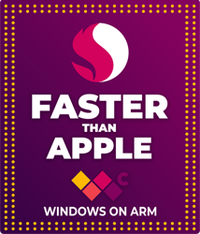PSA: It doesn't matter if your computer runs on ARM, all of your apps will work on Windows 11
x86-64 apps still run on Arm-based Windows PCs with emulation, and here's why it's vital for future devices.
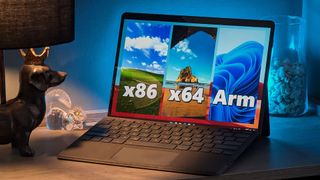
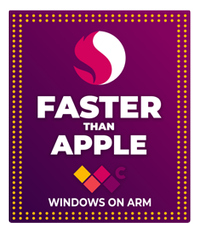
Windows on Arm | #FasterThanApple
All-new Snapdragon X Elite Arm processors from Qualcomm beat Apple's M3 chip in performance benchmarks and rank dead even with the Apple M3 Pro. The landscape of portable PCs is about to change as Windows on Arm becomes faster than Apple.
Running traditional apps with Windows on Arm devices might seem unusual to some, and it's not unreasonable to assume that compatibility isn't guaranteed when so few devices with ARM64 processors from Qualcomm and Microsoft enjoy mainstream popularity. Chromebook laptops powered by Snapdragon processors rely on Google's ChromeOS, and hundreds of tablets support Microsoft's Android apps but never native x86-64 versions. In fact, for the past few years, you've regularly been able to count the number of supported Arm Windows laptops on one hand.
So, for those considering a device like the Surface Pro 9 running Microsoft's customized SQ3 ARM processor or a Robo & Kala 2-in-1 with Qualcomm's stock Snapdragon 8cx Gen3, how many apps from your daily workload could you carry over from an Intel or AMD-based Windows PC? The good news is that practically everything works. The better news is that the next generation of Qualcomm's processors, like the Snapdragon X platform, will dramatically boost performance on these traditional x86-64 apps. I tested my most common apps, and here's what I learned: there's no reason to be wary of Windows on Arm.
How do ARM-native apps differ from x86-64?
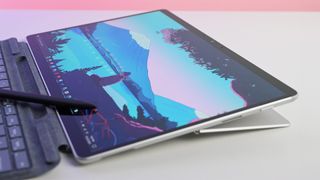
Although various software can appear completely identical on your screen, most modern laptops and desktop PCs contain x64 (64-bit) processors made by Intel or AMD, and they cannot natively interpret the underlying code of an ARM64 app and vice versa. However, emulating or virtualizing the opposing codebase can enable either system to run apps designed for that operating system, albeit with varying degrees of performance degradation. Microsoft offers instructions for adding Arm support to software in development with Visual Studio, and more high-profile app developers like Adobe have been adding Arm-native apps to their portfolios for the past few years.
Using an app designed to run natively on your operating system leads to better performance and increased efficiency, as your PC doesn't need to do any in-between code translation before processing its given tasks. Some of the best Windows on Arm laptops generally boast longer battery life thanks to an overall lower power consumption, so using a native ARM64 app with an Arm device helps prolong portable use and speed up general app behavior within Windows 11. While it requires more power to run x86-64 applications on Qualcomm's older Snapdragon and Microsoft-modified SQ processors, the apps are still compatible despite their base-level code differences.
Testing x86-64 Windows apps on an Arm device
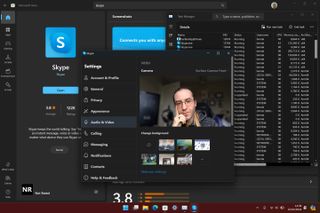
Firing up a four-year-old Surface Pro X and updating to Windows 11 shows that a massive amount of stock Microsoft apps are running natively on ARM64, and those that aren't should still behave as expected. From the ultra-basic mainstays like 40-year-old Notepad and Microsoft Paint to modern additions in Phone Link and the divisive new Outlook app running Arm-native builds, some notable standouts still run on traditional x64 (64-bit) and even x86 (32-bit) architecture, including, curiously, the official Surface Diagnostic Tools app for troubleshooting potential bugs.
Skype runs as an emulated x64 app on a Windows 11 for Arm, but performance isn't noticeably affected.
Looking into Microsoft's other long-serving apps shows that Skype runs as an emulated x64 app on Windows 11 for Arm, but performance isn't noticeably affected. In fact, testing the front-facing webcam with a live post-processing background blur effect didn't cause any issues, so I could happily join video calls (if I knew anyone who still used Skype.) Of course, there are far more demanding apps in the Windows ecosystem than Skype, but since Adobe created Arm-native versions of Photoshop and Lightroom, my arsenal of daily-driver apps runs at maximum efficiency.
Third-party drivers can be a minor exception
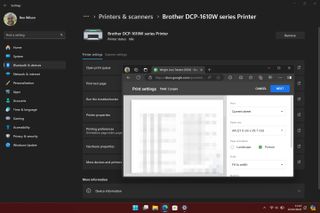
Running x86-64 software with Windows on Arm can cause genuine compatibility issues if manufacturers have never compiled compatible drivers for Arm64. These drivers are necessary for the app to communicate with third-party hardware, and Microsoft explains as much in its Windows Arm-based PCs FAQ: "Peripherals and devices only work if the drivers they depend on are built into Windows 11, or if the hardware developer has released Arm64 drivers for the device." The same can apply to some video game technology, like anti-cheat protection blocking the use of x86-64 emulation.
Get the Windows Central Newsletter
All the latest news, reviews, and guides for Windows and Xbox diehards.
However, that shouldn't discourage most users from using a Windows on Arm device. During my testing, I had no issues connecting to my wireless printer with Microsoft's built-in drivers, as the Surface Pro X correctly identified and printed pages from Microsoft Edge. I even enjoyed compatibility with older, more obscure hardware like a SpyderX Pro colorimeter, which I use to benchmark display performance in laptops and monitors. So far, I'm struggling to find an accessory in my office that causes Windows to display an Arm incompatibility error, but that's not to say it never happens.
Windows on Arm is as close to perfect as it has ever been. With recent hints at an Arm-powered Surface Pro 10 with a 10-core Snapdragon X Plus processor, it could be the ultimate Windows device thanks to these leaps in Arm's compatibility and performance. There are still issues to patch, but there's no reason to fear whether or not Windows on Arm runs x86-64 apps.

Ben is the channel editor for all things tech-related at Windows Central. That includes PCs, the components inside, and any accessory you can connect to a Windows desktop or Xbox console. Not restricted to one platform, he also has a keen interest in Valve's Steam Deck handheld and the Linux-based operating system inside. Fueling this career with coffee since 2021, you can usually find him behind one screen or another. Find him on Mastodon @trzomb@mastodon.online to ask questions or share opinions.
-
Dholzer This has been hyped greatly. But what is the use case here? It is basically a cheaper M3 Pro laptop. Which is fine, but all the hype is going to make people excited for an experience that is likely going to let them down. As the article mentions, there are driver incompatibility issues, and there are also lots of issues with games (at least with Apple silicon with Windows on ARM).Reply -
Ben Wilson Reply
I wouldn't expect to game on a Surface Pro to be honest, and I'm finding I use it every evening since picking one up second hand. The battery life alone is hilariously long, so if Qualcomm delivers better performance than an M3 chip on top of that, I'm all in.Dholzer said:This has been hyped greatly. But what is the use case here? It is basically a cheaper M3 Pro laptop. Which is fine, but all the hype is going to make people excited for an experience that is likely going to let them down. As the article mentions, there are driver incompatibility issues, and there are also lots of issues with games (at least with Apple silicon with Windows on ARM).
It's not pretending to be a gaming laptop, but neither is a MacBook, they're just consequential apps. -
vascro There's a typo/incorrect information in the article; the surface pro 9's processor is identified as the SQ1, this is incorrect. The SQ3 is the process or in the SP9 5G. The SQ1 was in the original surface pro X.Reply -
Ben Wilson Reply
Aha! Nice catch, I'd been staring at my Pro X too long. Fixing.vascro said:There's a typo/incorrect information in the article; the surface pro 9's processor is identified as the SQ1, this is incorrect. The SQ3 is the process or in the SP9 5G. The SQ1 was in the original surface pro X. -
naddy69 Yes, Windows Arm has come a LONG way since Windows 10 on a Surface Pro X. I had an X a few years ago, which was 16GB and 512GB storage. About the only MS software that was Arm native was Edge. But even the background Edge Update Service was Intel. How lame was that? Notepad, Windows Media Player and everything else was still Intel code.Reply
I am running Windows 11 Arm in a VM on this MacBook Pro. Everything I have that is still Intel runs fine. And fast. Even a game I wrote 15 years ago, which is X86 code.
BTW I sold the Pro X on eBay after only a few months. The hardware was GREAT, but the software just was not there yet. Way too much Intel code was running in (bad) emulation, which killed both performance and battery life.
Windows 11 Arm ’s Intel emulation is WAY better. Plus much more (all?) of Windows is running Arm native code now. That was not the case with Windows 10 when I had the Surface Pro X. Not to mention that I am running on an Apple M2 Pro Arm CPU that is also WAY faster/better than the Arm CPU the Pro X had. -
Ben Wilson Replynaddy69 said:Yes, Windows Arm has come a LONG way since Windows 10 on a Surface Pro X. I had an X a few years ago, which was 16GB and 512GB storage. About the only MS software that was Arm native was Edge. But even the background Edge Update Service was Intel. How lame was that? Notepad, Windows Media Player and everything else was still Intel code.
I am running Windows 11 Arm in a VM on this MacBook Pro. Everything I have that is still Intel runs fine. And fast. Even a game I wrote 15 years ago, which is X86 code.
BTW I sold the Pro X on eBay after only a few months. The hardware was GREAT, but the software just was not there yet. Way too much Intel code was running in (bad) emulation, which killed both performance and battery life.
Windows 11 Arm ’s Intel emulation is WAY better. Plus much more (all?) of Windows is running Arm native code now. That was not the case with Windows 10 when I had the Surface Pro X. Not to mention that I am running on an Apple M2 Pro Arm CPU that is also WAY faster/better than the Arm CPU the Pro X had.
That's basically what I was expecting but so far the native Arm library has covered almost everything except Skype, Clipchamp, and, funnily enough, the Surface Diagnostic Tools app! -
CadErik Makes me wonder if future Xbox ARM handhelds are possible. These devices might be first gen of solid ARM devices that will finally compete with Apple but I'm excited to see what will be coming in terms of battery efficient devices. I think it will be a game changer because these chips could also power cloud servers.Reply -
ShavedMonkey l have been using the Surface Pro 9 ARM for over a year and hands down has been the best experience l have had on a Windows PC (with 3 previous Intel Surface devices). Battery life is amazing, to the point that it has never had the opportunity to go below 20% once since I have owned it. It' runs cool, and totally silent - like a phone or iPad. All the Apps, printers, devices I use all just work. I even run MAME (emulator being emulated, then emulated!) perfectly. In Task Manager over 95% of the entire running services, and apps are reported as ARM native, so a lot of work has also already been done. Don't do any hard core gaming on it - but who does on a standard Surface or laptop.Reply
Next Windows device will definitely be ARM based.
